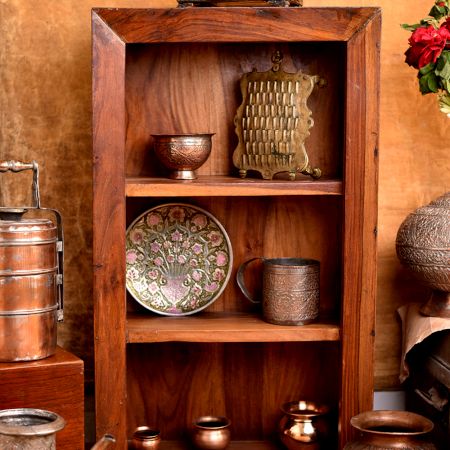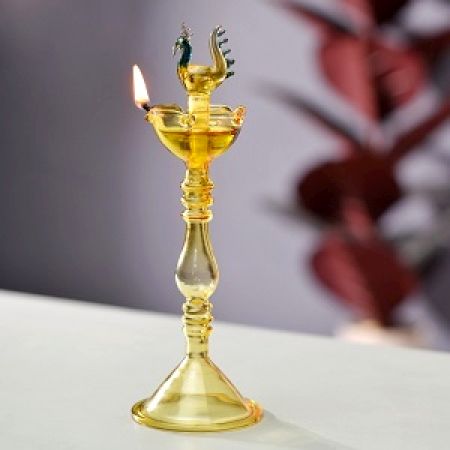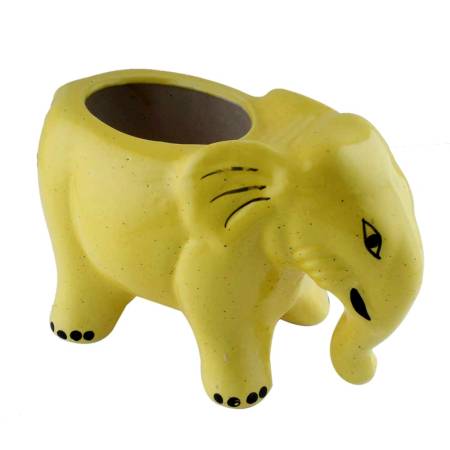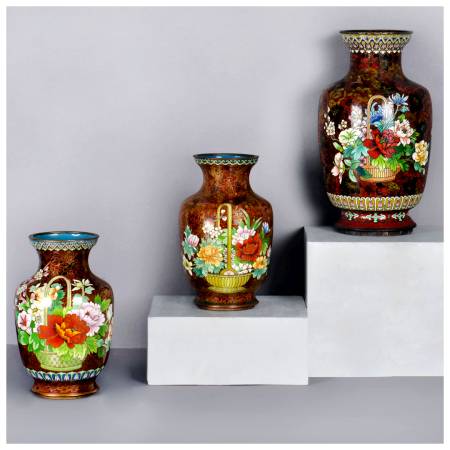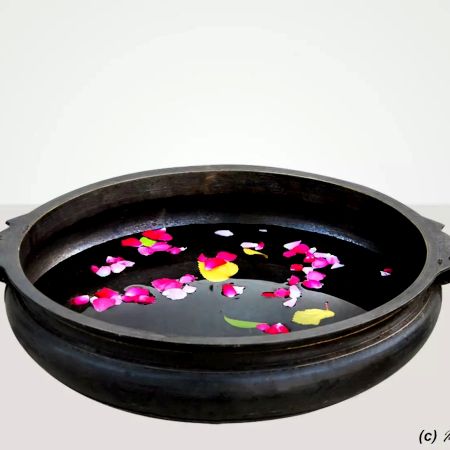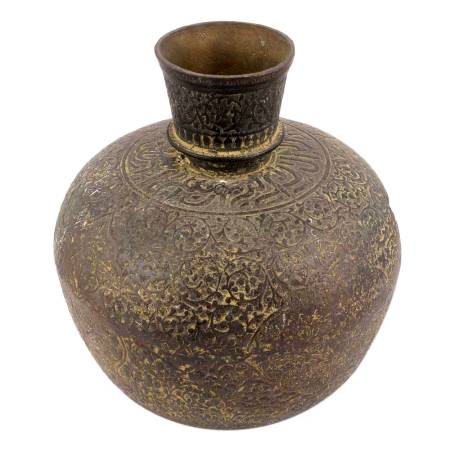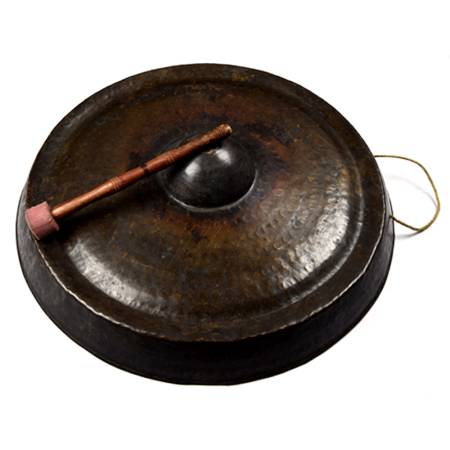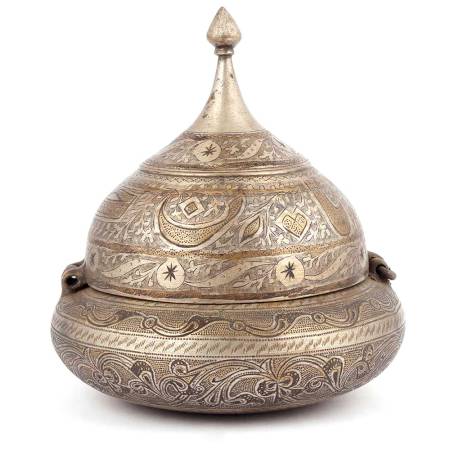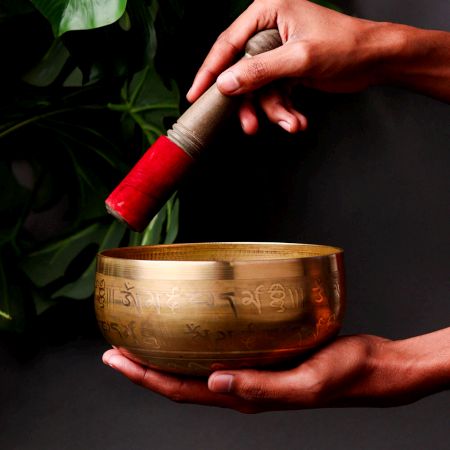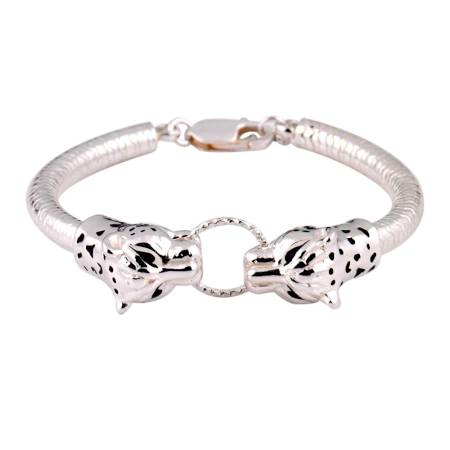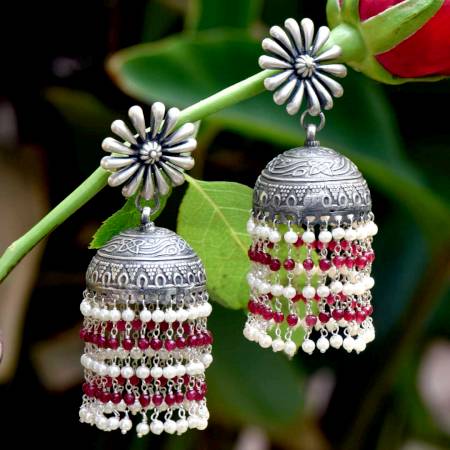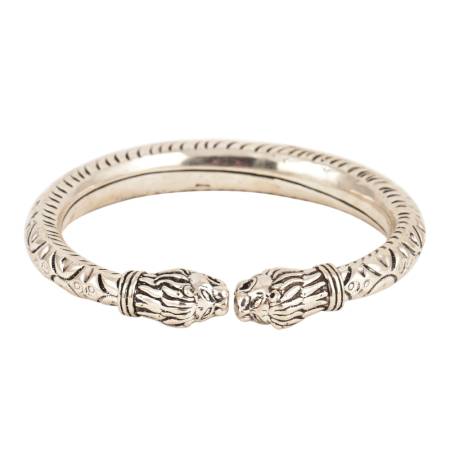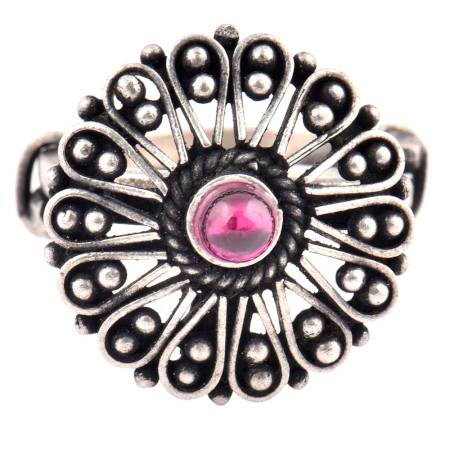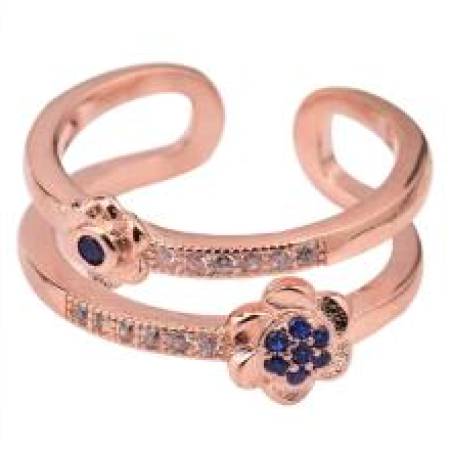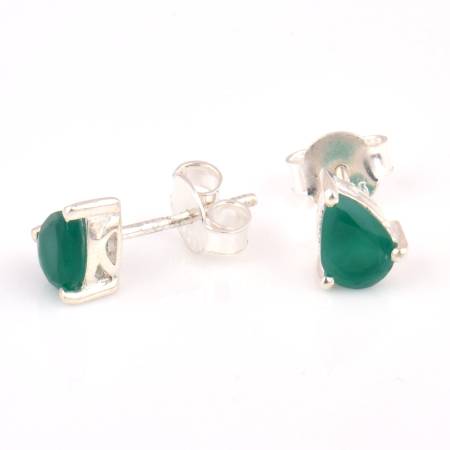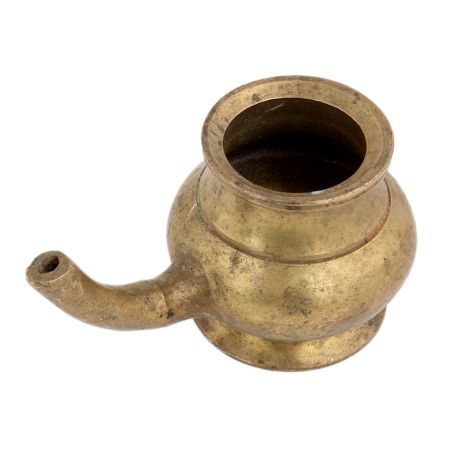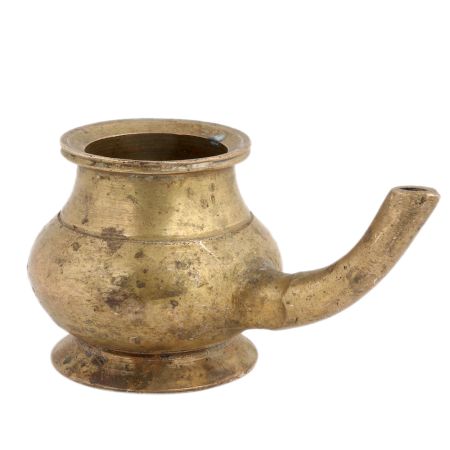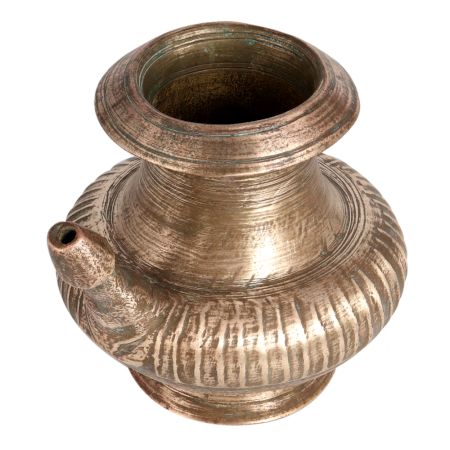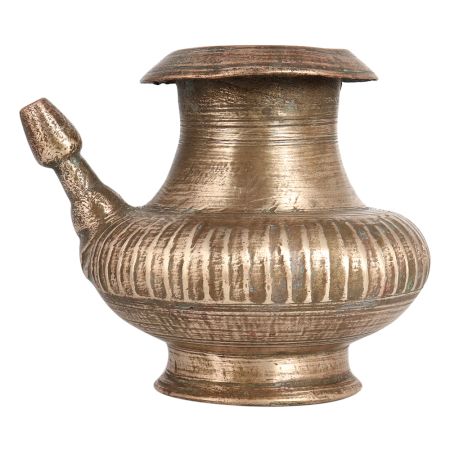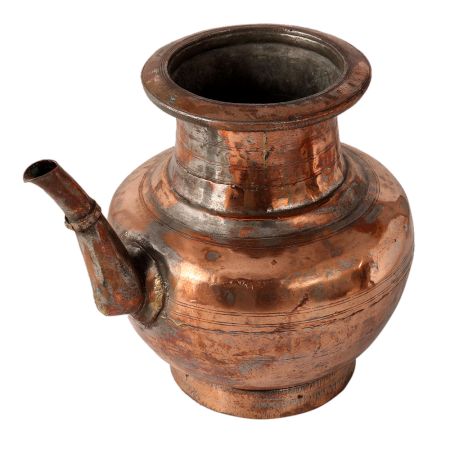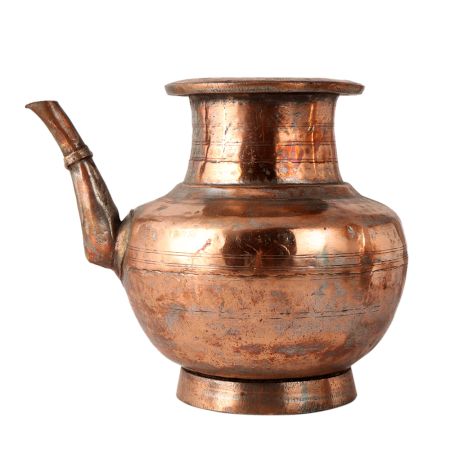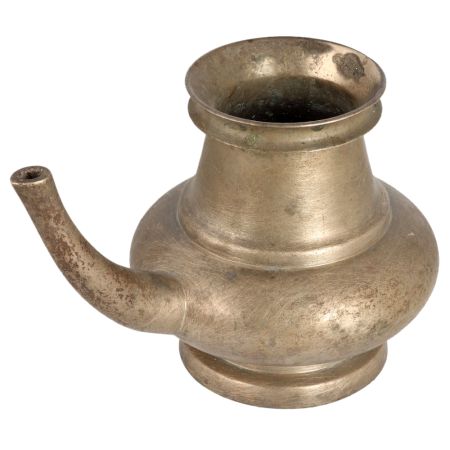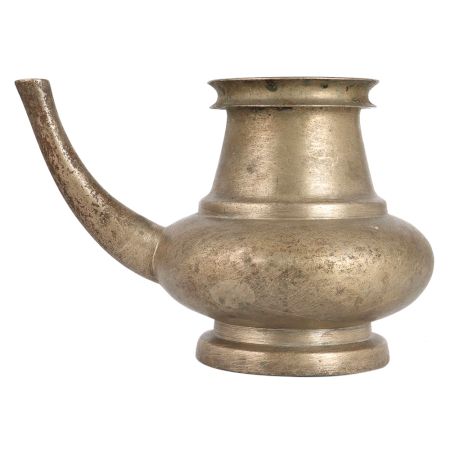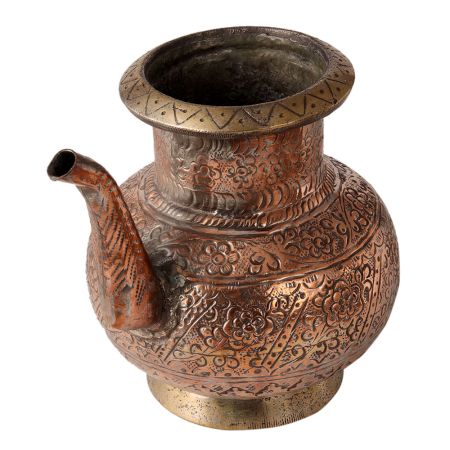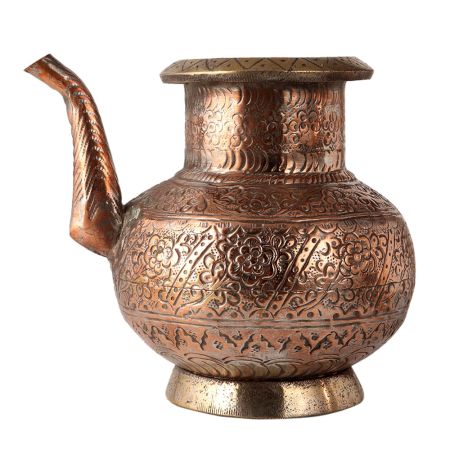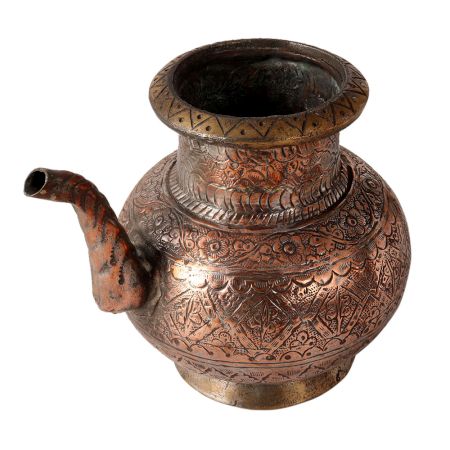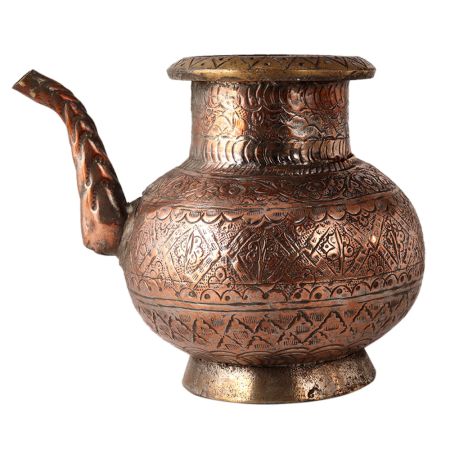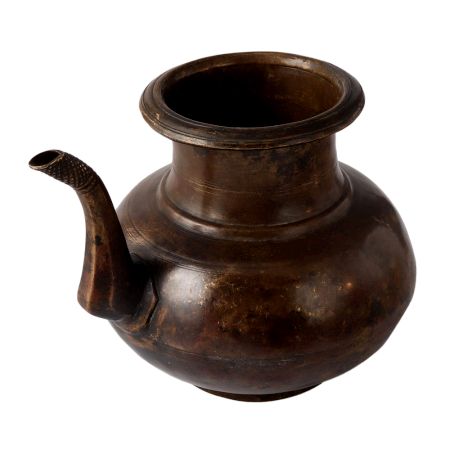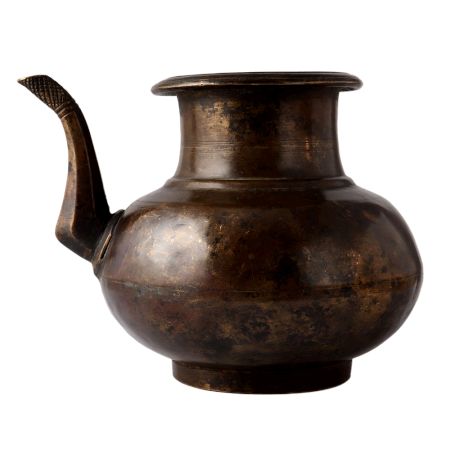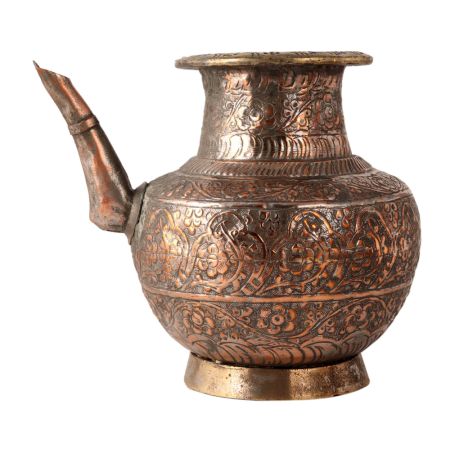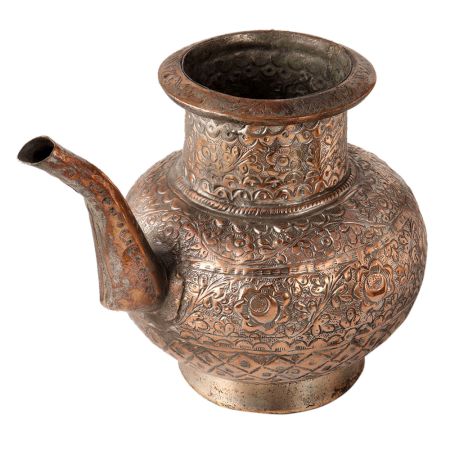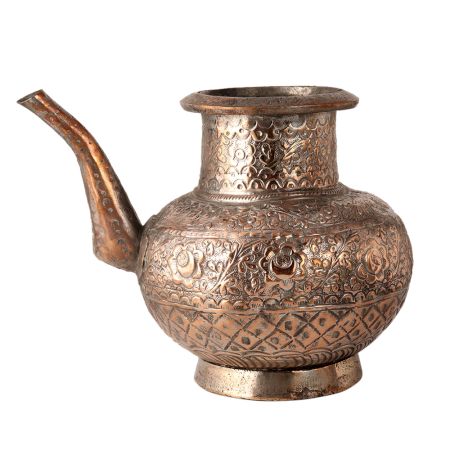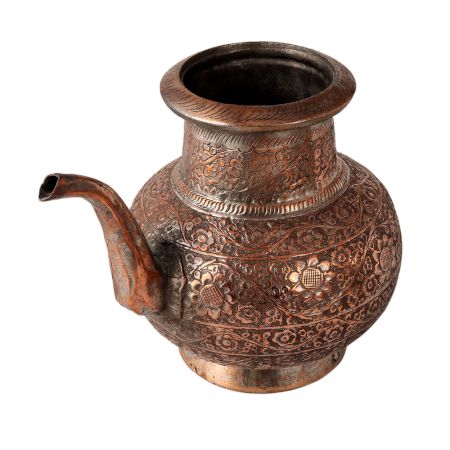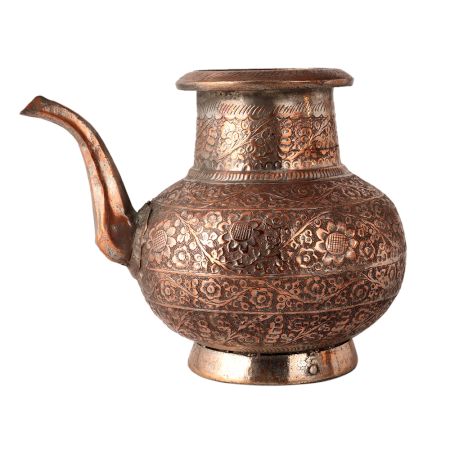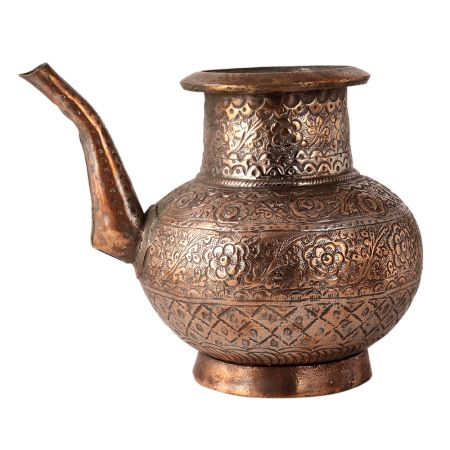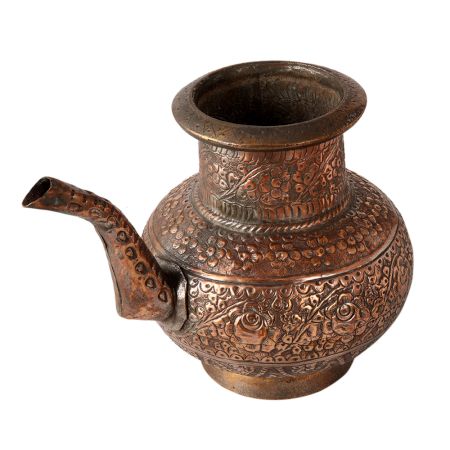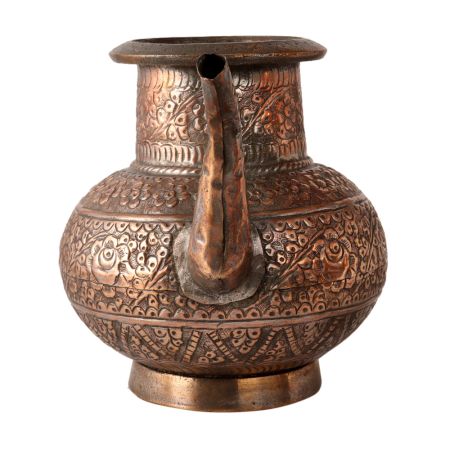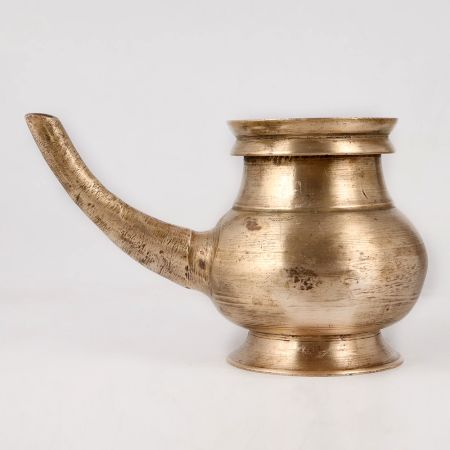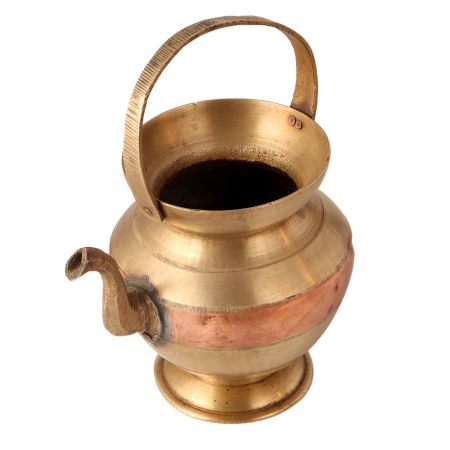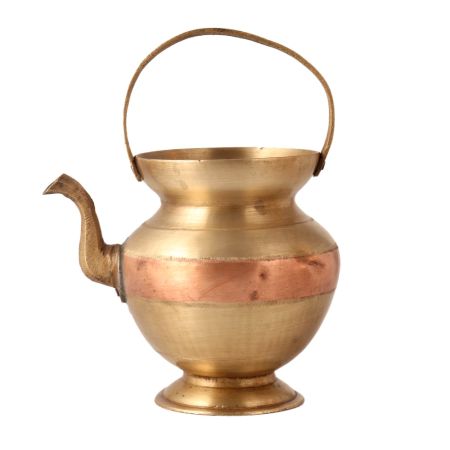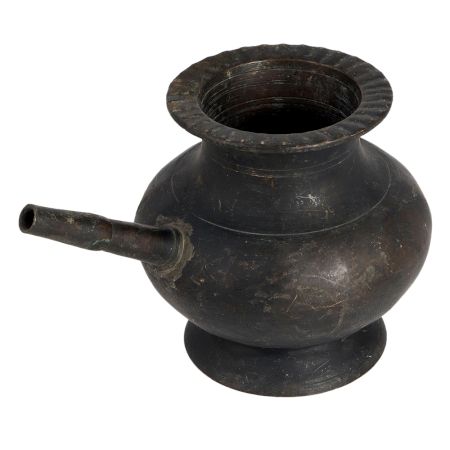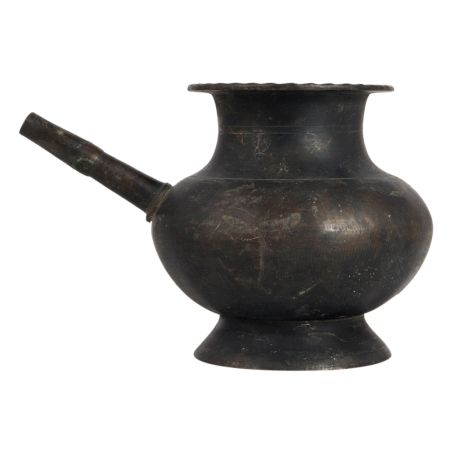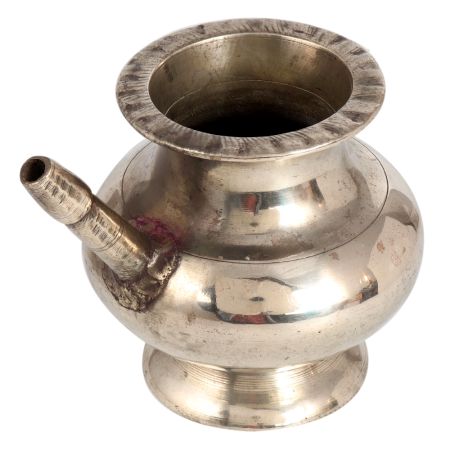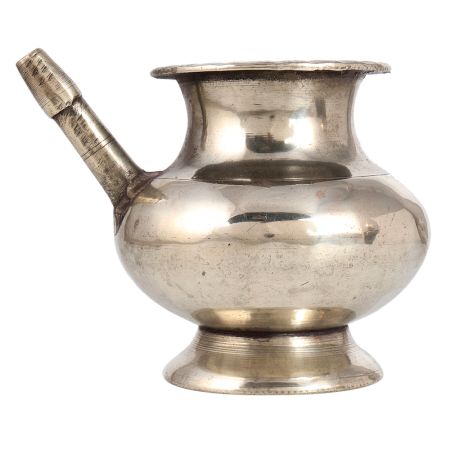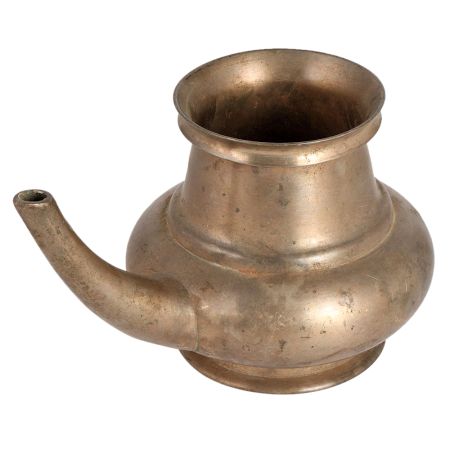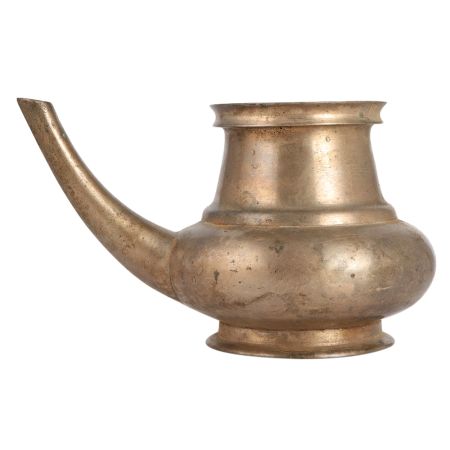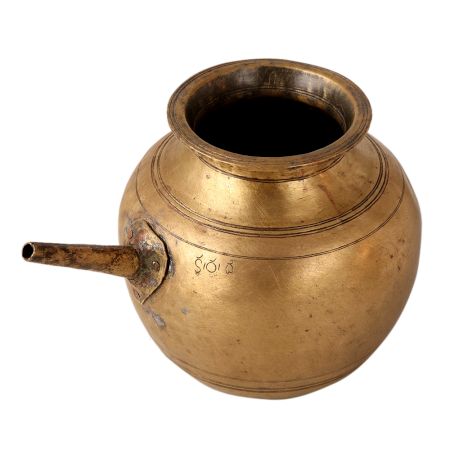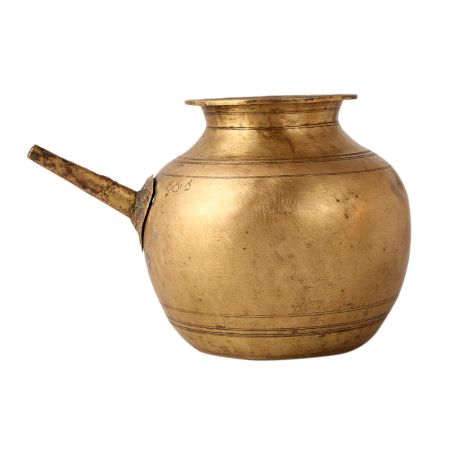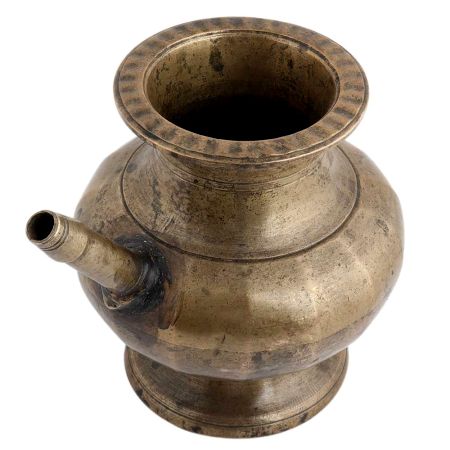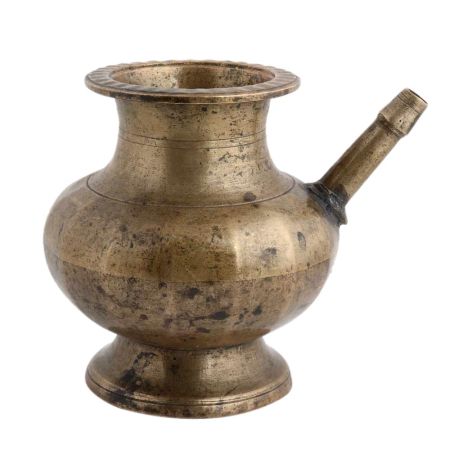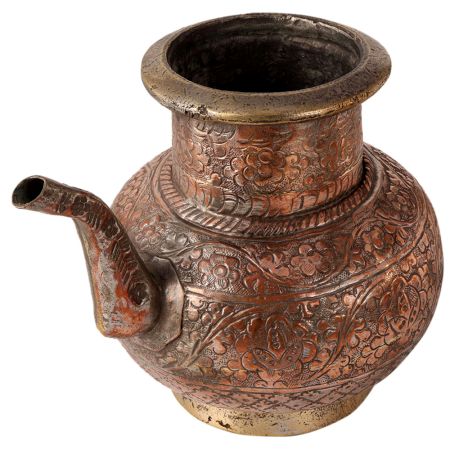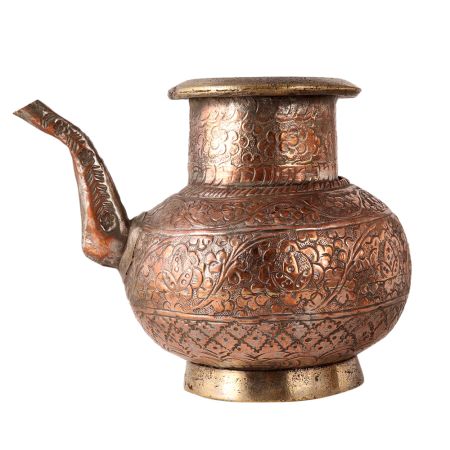Premium Vintage Pots for Washing Hands as Home Decor Element
A vintage handwashing pot is a functional heirloom, a container once central to hygiene before running water became standard. Typically found in Indian households—especially rural and old urban settings—these pots were used to pour water over the hands before meals or after returning home. Their origin traces back to centuries-old traditions where cleanliness was spiritual, not just physical. Crafted in brass, copper, or ceramic, these vessels weren’t just used—they were passed down. You’d find them near courtyards, sometimes accompanied by a small stool and a soap dish made of clay. Beyond their use, they held emotional memory—of mothers calling children in from the fields to wash up, of guests being welcomed with care, not just words. In a world increasingly rushing forward, these pots whisper of stillness, grace, and routines where even the act of washing hands was wrapped in intention.
How Is A Vintage Handwashing Pot Different From Modern Or Contemporary Handwashing Accessories?
The difference lies in essence, not just design. A modern handwashing accessory is built for speed and function—ceramic sinks, automatic dispensers, sensor taps. Clean, sterile, efficient. But a vintage handwashing pot carries a soul. It doesn’t just hold water; it tells a story. Unlike modern setups, which often disappear into walls or vanish into routine, vintage pots command presence. They’re not built into architecture—they sit within it, deliberately placed. There's a human touch—pouring water by hand, waiting, being present. In contrast to the fixed position of a tap, a pot can move, adapt, serve indoors and outdoors alike. While modern pieces are sleek and forgettable, a vintage pot is often ornate—etched with motifs, hammered with hands, sometimes aged with a patina that no design software could replicate. It’s not just about washing hands—it’s about grounding oneself in the continuity of ritual and remembering we are part of a slower, older rhythm.
What Are The Different Styles Or Types Of Vintage Handwashing Pots?
Vintage handwashing pots come in a variety of styles, shaped by region, material, and purpose. The most recognizable are brass lotas—round-bellied with a small neck, used across northern India. Then there’s the copper kalash, often engraved, used both for washing and rituals. Kerala-style spouted ewers reflect coastal craftsmanship, sometimes paired with carved wooden stands. Mughal-inspired vessels, on the other hand, might feature floral inlay or enamel work—more ornamental, less rustic. In Rajasthan, you’d find terracotta or ceramic pots with painted motifs, built for arid climates. Some come with lids or twin handles; others are slim, shaped to pour water slowly over cupped hands. There’s also a rare variety with a spout and built-in base, used in wealthier homes where the pot sat on an intricately carved brass plate. Each type reflects not just utility but the cultural mood of its region—designed not merely to hold water, but to cradle it with grace.
What Materials Are Commonly Used In Vintage Handwashing Pots?
The materials speak of utility first, but they also speak of Earth. Brass is perhaps the most common—sturdy, antibacterial, and golden-hued, it was revered for both its durability and healing properties. Copper, known for its purifying qualities, comes next—its reddish tone aging into a natural patina over time. Terracotta and clay were widespread in rural households—affordable, cool to the touch, and grounded in simplicity. Ceramic and porcelain made their way into more affluent homes, often glazed, painted, and fragile. Some rare vintage pieces combine metal with wood, using wooden handles or bases carved with floral designs. Each material had intent—whether to stay cool in summer, resist corrosion, or hold water without imparting taste. Unlike modern materials like plastic or synthetic composites, vintage pots were made to be part of the earth cycle—used, aged, and returned. They didn't just serve; they endured, collecting fingerprints of decades with silent dignity.
What Motifs Or Designs Are Commonly Found On Vintage Handwashing Pots?
Designs on vintage handwashing pots were rarely random—they were reflections of beliefs, environment, and artistry. Common motifs included lotus flowers, creeping vines, and peacocks, all symbolic of purity and beauty. In brass or copper pieces, you’d often find hammered textures, done by hand—each dent deliberate, forming patterns across the surface. Some pots carried geometric borders, drawn from temple architecture. In south Indian pieces, elephants and mango leaves graced the body of the pot, invoking fertility and prosperity. Sun and moon icons might appear subtly etched, nodding to the cyclic nature of water and time. Terracotta pots featured painted designs—circles, dots, tribal forms. These weren’t mass-produced imprints; they were intimate, slow-born art. Sometimes the motifs were prayers in themselves, silent offerings etched in metal. You didn’t just wash your hands—you touched a pattern that someone, somewhere, once carved in quiet devotion.
Where Can I Buy Authentic Vintage Handwashing Pots Online?
Finding an authentic vintage handwashing pot online is like looking for a piece of time—not impossible, but you have to know where to look. Begin with heritage platforms like IndianShelf, Jaypore, and Rustic India, which curate genuine vintage decor. Etsy also has global sellers offering authentic Indian vintage items, though it requires discerning between replicas and real antiques. Look for terms like “pre-1950,” “hand-hammered,” “patina preserved,” or “from estate sale.” Verify seller reviews and ask for provenance or detailed photos. Architectural salvage stores or interior antique dealers online also sometimes list these pots under “water vessels,” “ritual utensils,” or “brass lotas.” Avoid platforms with overly polished or “too perfect” versions—they’re likely replicas. Authentic vintage pieces carry age—slight dents, discoloration, and weight. A true vintage pot isn’t a manufactured product. It’s a memory, waiting patiently for a home that can hear its story.
How Can I Incorporate A Vintage Handwashing Pot Into A Modern Bathroom Or Wash Area Setup?
Incorporating a vintage handwashing pot into a modern space isn’t about contrast—it’s about conversation. Let the pot speak. Place it on a reclaimed wood shelf or beside a stone basin. Use it as a pouring jug with a copper or brass bowl to recreate the ritual of handwashing. If your space is compact, mount the pot as a decorative feature, perhaps with trailing plants or ambient lighting. In minimalist bathrooms, it acts as a warm, grounding counterpoint to cold steel and white tiles. For functionality, consider fitting it with a custom tap mechanism—some artisans convert old vessels into functional faucets. In open spaces or verandas, the pot can become a handwashing station with a ceramic bowl below. Pair it with natural elements—coir mats, neem wood soap dishes, brass mirrors. A vintage pot brings not just utility, but atmosphere. It doesn’t ask to blend in—it invites the space to breathe slower, softer.
How Are Vintage Handwashing Pots Preserved And Celebrated Today?
Preserving a vintage handwashing pot is like holding time in your hands—gently, with reverence. Restoration today often begins with cleaning using natural agents like tamarind paste or lemon, which remove tarnish without stripping the soul. Collectors and conservationists avoid aggressive polishing, choosing instead to retain the patina that speaks of years passed. Some pots are displayed in museums, others in curated home corners, under soft light, beside letters or family heirlooms. In interior design, they are celebrated as accent pieces, embodying slow living and mindful design. Artisans in Rajasthan and Tamil Nadu now recreate these pots in homage, not imitation—reviving fading forms. On social media and design blogs, there’s a rising appreciation for functional nostalgia—bringing back beauty that once had utility. These pots are not fossils. They’re stories still being told—in homes that value rhythm over rush, meaning over mere aesthetics.
How Is Vintage Indian Handwashing Pot Culture Linked To Sustainability And Water Conservation?
At its core, the vintage handwashing pot is a masterclass in sustainability. Unlike modern taps that run endlessly, these pots encourage measured water use—you pour only what’s needed. In ancient homes, especially in water-scarce areas, handwashing was intentional. These pots were portable, reusable, and required no electricity or plumbing. Crafted from natural materials, they lasted generations—leaving no plastic waste, no metal rusting in dumps. Even in design, they used minimal ornamentation—only enough to serve both beauty and purpose. Today, as water scarcity returns to global conversations, these old vessels quietly offer a solution rooted in mindfulness. They nudge us toward conscious consumption, toward slowing down and reconnecting with the tactile world. And isn’t that what sustainability truly is? Not just green checkboxes, but everyday rituals that respect what we use and how. In their very stillness, vintage handwashing pots remind us to flow thoughtfully.
What Are The Best Vintage Handwashing Pot Gift Ideas For Home Decor Enthusiasts?
For those who love a home with soul, a vintage handwashing pot makes for a deeply personal gift. A small brass or copper pot with etched borders can be a thoughtful decor piece for entryways or bathroom corners. For a touch of storytelling, gift a restored terracotta pot with a note explaining its cultural significance. Pair it with a wooden tray, neem soap, or a handwoven towel for a full rustic ritual set. Some artisans now create upcycled versions fitted with taps or turned into vases—ideal for gifting to lovers of functional art. A Rajasthani or Mughal-style pot with peacock or floral motifs works beautifully for collectors. You could even include a handwritten tag detailing the pot’s origin or a line from Kabir or Tagore—something that elevates it from object to offering. After all, the best gifts aren’t loud. They’re lived with, touched often, and remembered quietly.
How Can I Identify An Authentic Vintage Handwashing Pot?
Identifying an authentic vintage handwashing pot requires a curious eye, a feel for history, and a love for stories cast in metal or ceramic. Start by observing the material—brass, copper, or enamelware often signal authenticity. True vintage pieces carry imperfections: patina from age, minor dents from use, or a faded floral motif that whispers of earlier times. Touch the pot—its weight, texture, and even smell can tell tales of its past. Check for maker’s marks, regional etchings, or design patterns linked to specific eras. If it’s too pristine, it might be a reproduction. Also, understand its cultural context: was it used in rural households, aristocratic mansions, or temples? Provenance—when available—is gold. You’re not just looking for an object, but a vessel with memory. Authenticity isn’t only in age, but in the presence it holds. It should feel like it belonged to a time that was lived fully.
How Do I Clean And Maintain A Vintage Handwashing Pot?
Cleaning a vintage handwashing pot is more than just upkeep—it’s a quiet ritual of preservation. Avoid harsh chemical cleaners or abrasive pads. For brass or copper pots, a gentle mix of lemon and salt rubbed with a soft cloth can work wonders. Enamelware? Mild dish soap and lukewarm water. Always dry thoroughly to prevent corrosion or fading. For pots with painted motifs or embossed carvings, use a soft-bristled brush to reach into crevices. Store in a shaded, moisture-free place—sunlight can wear down finishes, while humidity invites rust. Every few months, take it out, dust it gently, maybe run your fingers over the designs—like checking in with an old friend. If it has a strong sentimental or historical value, consider lining the inside to avoid wear if you’re using it regularly. With care and occasional affection, these vessels can live a hundred years more, telling stories long after we’ve left the room.
How Old Does A Handwashing Pot Need To Be To Be Considered “Vintage”?
The term “vintage” carries with it not just a timestamp, but a sense of nostalgia. Technically, a handwashing pot should be at least 20 to 30 years old to be considered vintage. But numbers alone don’t capture its soul. It’s about the era it belongs to—was it from the 70s, echoing minimalism, or older, embodying the earthy opulence of pre-independence India? The craftsmanship, design language, and material reveal the time it speaks from. A pot used in the courtyards of North Indian homes in the 1950s or one resting by the southern brass urulis of Kerala temples—both carry age as presence. If it brings a sense of place, smell, and sound from a time gone by, it’s vintage. But remember, “vintage” isn’t just about being old—it’s about being seasoned. It’s a fusion of time, use, and memory, etched into form.
Can I Use Vintage Handwashing Pots For Daily Use Or Only For Decor?
Vintage handwashing pots, while charming and nostalgic, are surprisingly durable. Many were made to endure decades of practical use. So yes—you can use them daily, provided you maintain them with care. Think of it as giving history a new rhythm. Brass and enamelware varieties are particularly sturdy and water-resistant. Just ensure the pot isn’t corroded from the inside and that no sharp metal edges remain. Some choose to install them as functional wash basins—paired with a modern tap—while others use them as water holders beside minimalist wash setups. Still, if the pot is too fragile or has cracks, it’s better suited for decor. As a centrepiece, a flower vessel, or a soap-and-towel holder, it becomes a silent storyteller in your space. Whether for use or show, the essence lies in its presence—rooted in culture, yet flowing into the now.
What’s The Difference Between Vintage And Antique Handwashing Pots?
The distinction between “vintage” and “antique” rests in age, but also in spirit. A handwashing pot is considered vintage if it’s around 20 to 100 years old—something your grandmother might have used in her youth. It reflects design trends, cultural habits, and materials of a relatively recent past. Antique, on the other hand, refers to items over 100 years old, often rare, sometimes delicate, and always carrying high historical value. An antique handwashing pot might have Mughal influences, pre-colonial Indian engravings, or be handcrafted with now-extinct techniques. It’s less likely to be used and more likely to be preserved or displayed in museums or curated homes. Vintage is accessible and functional, antique is sacred and archival. Both are treasures, but while one whispers stories you can still use, the other sings legends better left undisturbed.
Are Enamelware And Brass Vintage Handwashing Pots Safe For Daily Use?
Yes—enamelware and brass vintage handwashing pots are generally safe for daily use, provided they are well-maintained and free from damage. Enamelware, with its glassy coating, resists rust and is easy to clean, making it ideal for regular use in both traditional and modern spaces. Brass, long favored in Indian households, has antimicrobial properties and adds a luxurious warmth. But check: is the enamel chipped or cracked? Is the brass pot dented or flaking inside? Any such damage may compromise safety and hygiene. If you're repurposing a pot for actual handwashing, consider lining the inside or coating it with a water-resistant finish. Also, note the water you use—hard water may cause mineral stains on brass over time. With a bit of respect and regular care, both these materials don’t just serve you—they elevate the everyday act of cleansing into a gentle cultural ritual.
How Do I Clean And Maintain Old Vintage Handwashing Pots Without Damaging Them?
Cleaning old vintage handwashing pots demands patience and reverence. Start with the gentlest method—lukewarm water and a soft cloth. For enamelware, avoid metal scrubbers; instead, opt for a soft sponge and mild soap. For brass or copper, create a natural cleanser with lemon juice and baking soda or tamarind paste—a remedy as old as the pot itself. Use it sparingly, avoiding decorative engravings or painted sections. Dry thoroughly to prevent water spots and corrosion. Never leave water stagnant in them for long—it ages the metal quickly. Every few months, polish with a natural, non-abrasive compound to preserve its sheen. Store in a dry place, ideally wrapped in soft cloth if not in use. And once in a while, hold it under light, let your hands trace its curves, see where time left its marks—because maintenance is not just cleaning. It’s keeping memory alive.
Is A Vintage Handwashing Pot Suitable For Small Spaces Or Compact Bathrooms?
Absolutely. Vintage handwashing pots are often compact, designed in an era where space was both a luxury and a constraint. Their aesthetic charm lies in their ability to make a small corner feel timeless. A brass or enamel pot placed atop a rustic stool, or integrated into a minimalist washbasin setup, can become the focal point of a compact bathroom. Their verticality, often accompanied by slender necks and rounded bases, makes them space-efficient. Wall-mounted vintage brackets can also hold them elegantly. What you gain is not just utility, but an element of storytelling in your space. In tight urban apartments where everything feels manufactured, a vintage pot introduces irregularity—a curve, a glint, a memory. So yes, they’re perfect for small spaces. In fact, they might be the most beautiful object in the room.
What’s The Average Cost Of A Vintage Handwashing Pot Or Set?
The cost of a vintage handwashing pot can vary widely based on material, age, design, and provenance. A simple enamelware pot with minimal wear might start around ₹800 to ₹1500. A brass piece with intricate engravings or regional significance—say from Banaras or Jaipur—can range from ₹3000 to ₹7000. Heirloom-quality sets, especially those with matching accessories like a water jug or basin, can even touch ₹10,000 or more, particularly if they’re well-preserved or come with a documented origin. Online platforms, vintage décor markets, or antique fairs might offer better deals—but always inspect or request detailed photos. Remember, you’re not just buying a product—you’re acquiring a slice of time, a piece of cultural fabric. The real value often lies beyond the price tag—in the history it carries, and the atmosphere it lends to your space.


